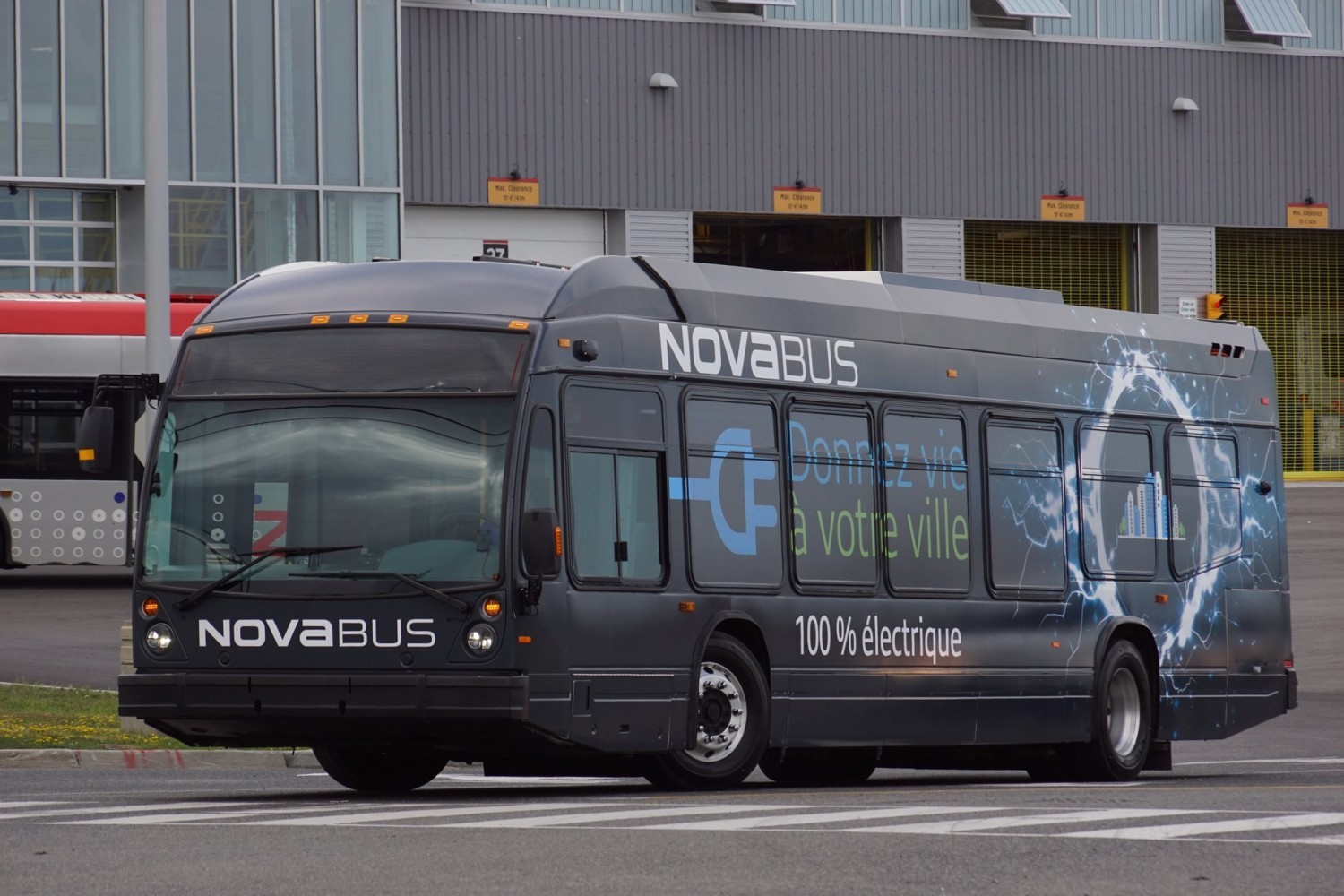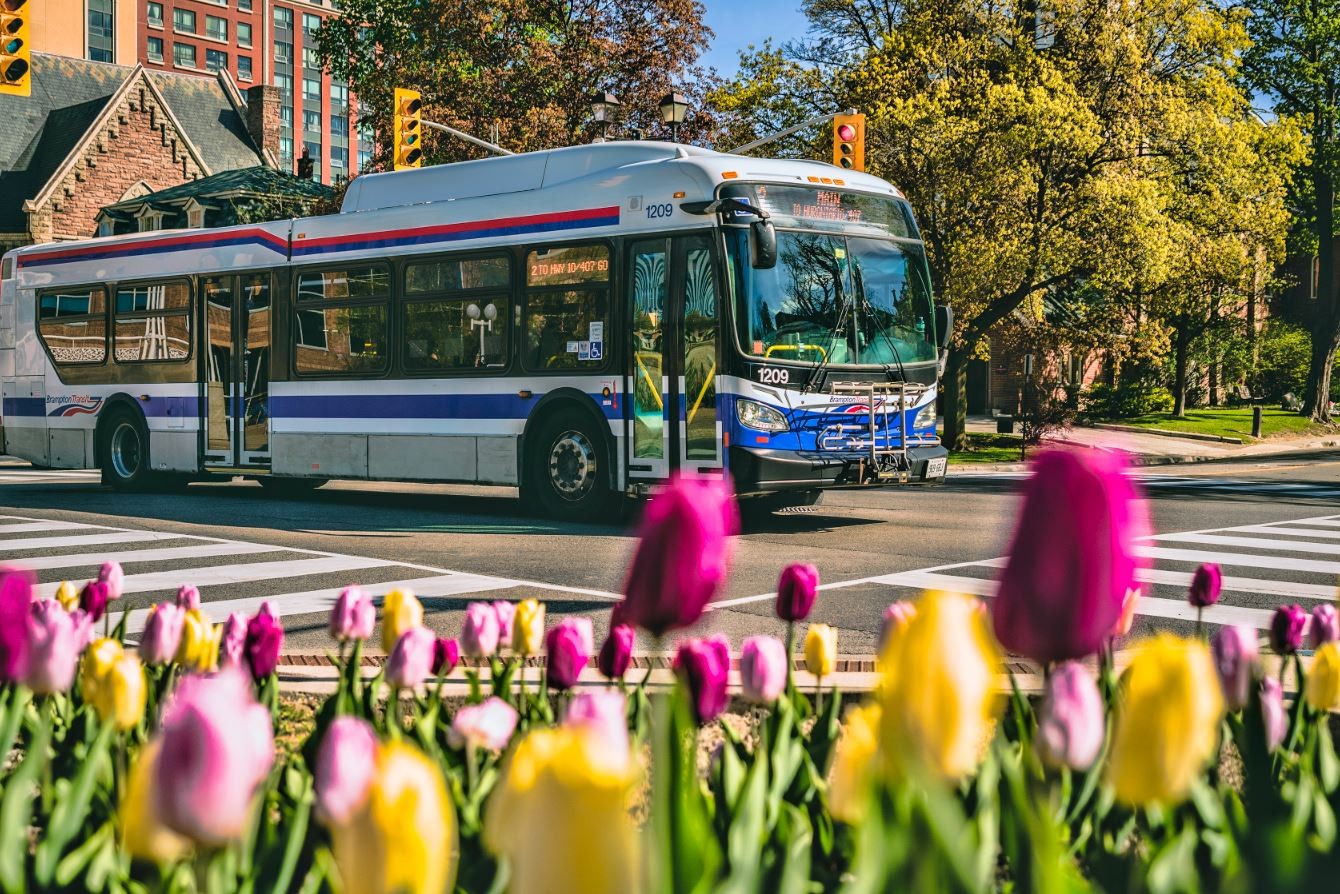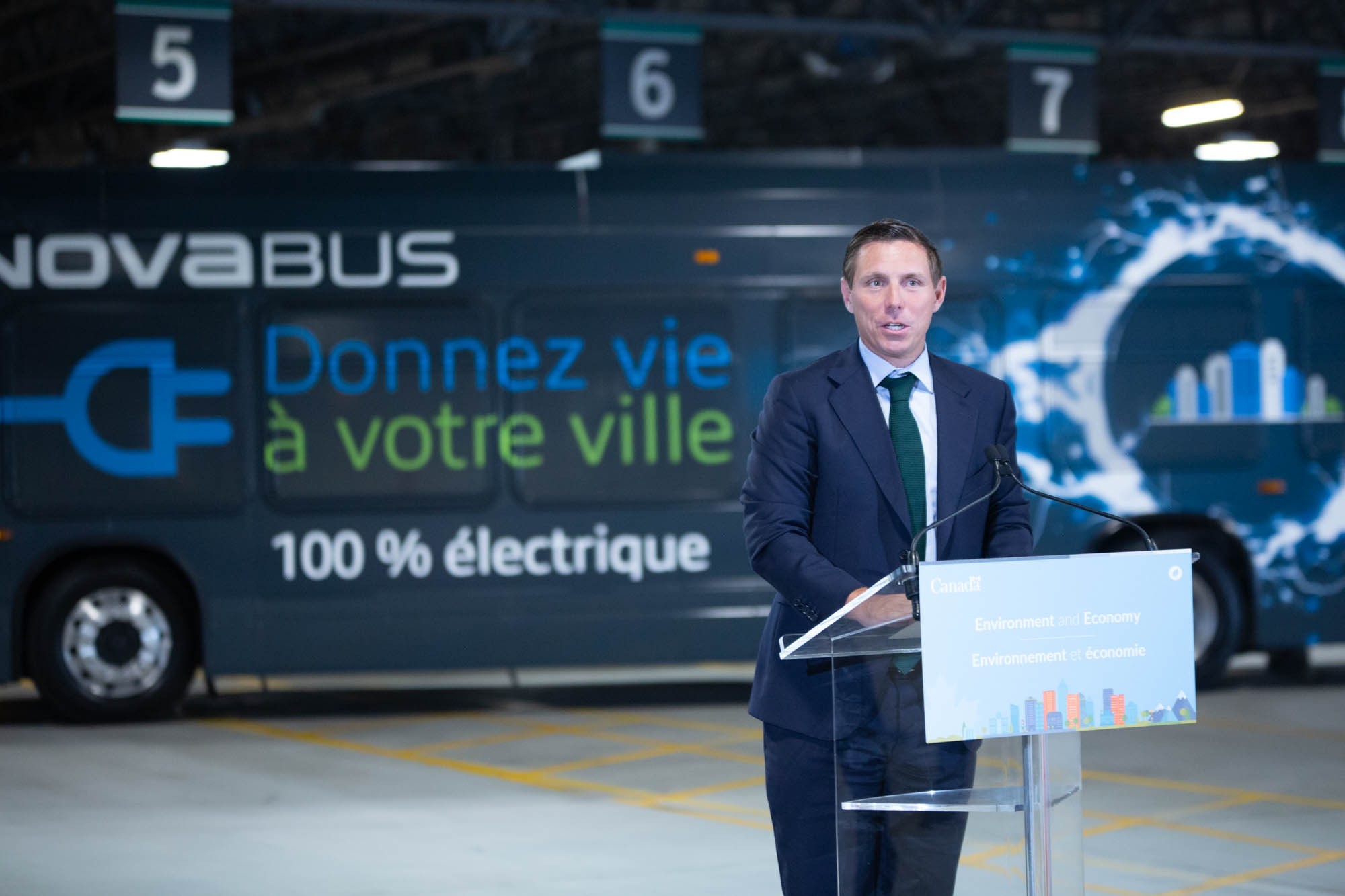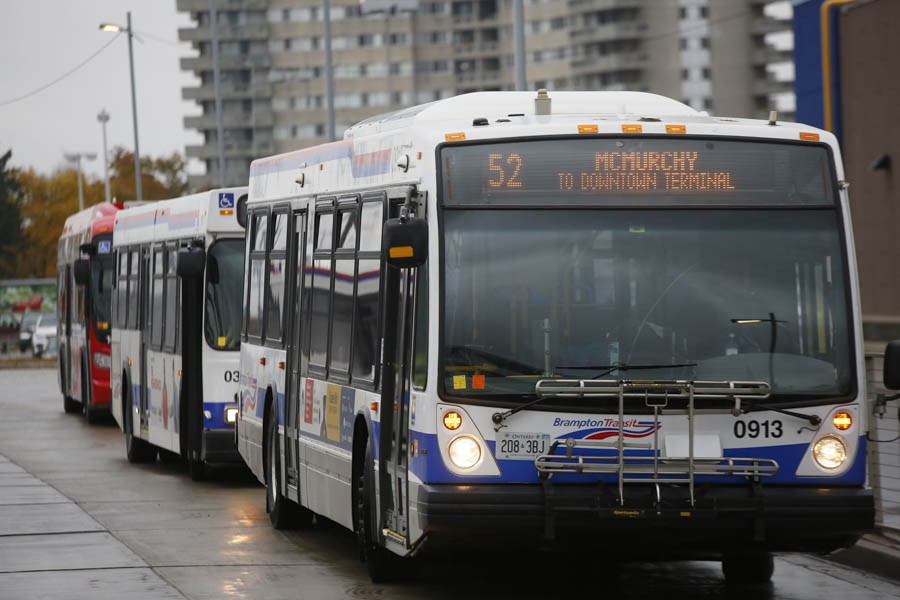
Brown’s claim of electrified transit facility latest in a growing list of empty promises
In June, a media release from the City of Brampton proclaimed its plan to construct “one of North America’s largest” electric bus storage and maintenance facilities. It hailed councillors for their commitment to green policies and plans for a zero-emissions future.
It was “a milestone in the City of Brampton’s commitment to being a Green City”.
There was a caveat: any success for the project is “contingent upon receiving funding from other levels of government.” The press release, masquerading as the announcement of a new project, simply reported councillors were interested in building an electric bus hub, on the condition someone else paid for it.

Modernizing the city's bus fleet is a crucial step in the effort to meet the city's growing transit needs while mitigating the impacts of climate change.
The press release was just one scene in the confusing drama unfolding around Brampton’s desperately needed third transit storage facility.
The journey began in 2015, when the City’s master planning process identified a need for an additional two new bus garages: one in 2021 and a second in 2028. The move was suggested in order to prevent the existing two facilities from reaching “crush capacity,” something the City admitted in a 2019 email would happen by 2023 at the latest. In the years following the 2015 recommendation, transit demand only skyrocketed, increasing the urgency.
The amount of storage and maintenance space Brampton Transit owns directly impacts the frequency with which buses arrive around the city. More storage space means more buses and a more reliable bus service for residents.
A public workshop at the end of 2019 showed the City’s two current storage facilities would exceed their optimum capacity by 2022 as a result of growing demand for more service hours.
Last year, council scrapped the blueprint drawn up in 2015. Instead, it was decided one large facility should be constructed in 2024 to accommodate the growing transit service and save on the cost of operating two separate garages.
The compromise put the future of Brampton’s transit growth on a knife edge. If the City got creative, it could just about cope until 2024, but not a day longer.
“We feel fairly comfortable with our growth, comfortable that we can most likely accommodate [new buses] in our current two facilities — which would be overcapacity,” Alex Milojevic, general manager of Brampton Transit, told The Pointer in 2019. He also said portable hoists, for example, could be used to “accommodate extra buses overcapacity for a certain period of time.”
The politics behind the City’s 2020 budget would complicate the project. Mayor Patrick Brown, a Conservative who has made clear his disdain for tax increases, signalled he wanted a second consecutive freeze. The $135 million previously earmarked for the 2024 garage was removed from the budget and pushed off to later years.
At the time, Brown said the project was being put to one side while a partnership was arranged with the federal government to fund its electrification. His words suggested a realistic deal between the Government of Canada and the City of Brampton to charge electric buses in the new facility was on the table.

While Brown justified putting off $135 million in spending for a transit maintenance facility by claiming the City was pursuing a partnership with the federal government, no such partnership has materialized.
“There’s been a little bit of tinkering because we’re looking at electric buses and how that might change it, but we expect we’re going to have a partnership with the federal government for that," Brown said in February.
An investigation by The Pointer shows, as of October 30, no such funding agreement or route to an agreement exists. Eight months after Brown hinted at a partnership with Ottawa, the City has nothing to show.
Brown did not respond to a list of questions.
It’s unclear how the mayor plans to budget hundreds of millions of dollars to purchase a new fleet of electric buses.
Despite Brown’s words in February, conflating funding for construction with an electric future, there are essentially two major projects related to the third garage. One is its construction as a standard storage and maintenance facility — something Brampton Transit has made clear is desperately needed — the other is its electrification to charge a future fleet of zero emissions buses. Electrifying the facility during its construction would save funds and streamline the process, but a retrofit is also possible.
The $135 million removed from the 2020 budget was to build the 2024 bus garage as a standard facility. In October 2019, Brampton submitted a request to the Investing in Canada Infrastructure Program (ICIP) for roughly $175 million to build the facility; if accepted, the City would pay $46.6 million, raised through external debt, for its portion of construction
It is unclear why the ICIP figure is higher than the sum originally budgeted by the City.
These figures — the removed $135 million, $46.6 million in external debt and $175 million ICIP application — all relate to the construction of the first phase of a standard garage. They do not include any of the electrification touted by June’s press release or Brown’s February comments.
A June 3 staff report to councillors stressed that funding through the ICIP program had not yet been approved.
“The first phase of the new Transit Facility will be scaled to the funds available,” the report said.
“The MTO [Ministry of Transportation] have indicated they are doing a final review of the submission and will indicate if they will nominate the project to the federal government for review,” a spokesperson for the City of Brampton told The Pointer on September 10.
Unlike the figures listed thus far, all references to electrifying the facility are aspirational. The City has not prepared an application to fund the $150 million required to charge electric buses at its new facility, nor has it identified any funding opportunities for the project.
“There are no funding opportunities for the electrification of this project under ICIP; however, if other programs become available, we will look into them,” a City spokesperson told The Pointer on October 30.
The closest Brampton has come to a plan to fund the facility is a motion passed by its Committee of Council in early June. Councillors sent a copy of their motion resolving to build an electric bus facility to Brampton’s five local Liberal MPs and the federal government.
The motion, moved by Brown and seconded by all members of council, admitted “without an infusion of incremental funding” from Ottawa “it will not be possible” to electrify the facility. In a move described by the City as “advocacy to move this project forward”, councillors forwarded a copy of their motion directly to the federal government.
“Brampton City Council request[s from] ... the Government of Canada, an incremental funding grant of approximately $150M (to be confirmed), to provide the required investment to consider full electrification of the third transit facility in the City of Brampton,” the resolution reads.
It took Ottawa a couple of months to reply, but when they did, the communication was clear. In a letter published on a Brampton agenda in September, Alison O’Leary, Assistant Deputy Minister of Infrastructure Canada, denied the request for $150 million, saying the City had gone about the process wrong.
“Under the Integrated Bilateral Agreement with Ontario, proposed projects must first be prioritized by the province before they are submitted to Infrastructure Canada for funding consideration,” O’Leary wrote. “As such, I would encourage you to submit your proposal to the Ontario Ministry of Infrastructure so that it may determine whether the project should be prioritized for funding consideration.”
The Pointer approached Infrastructure Canada to ask how common it was for cities to simply write to the Ministry asking for funds. A spokesperson laid out the terms of ICIP, highlighting Ontario’s role in creating a shortlist of projects for the federal government to choose from.
“Under the Investing in Canada Infrastructure Program (ICIP), projects must first be prioritized by the province or territory – in this case the Province of Ontario – and then submitted by the province to Infrastructure Canada for review and funding consideration,” the response read.
In Brampton, the need for charging infrastructure to be included in garages is a nod towards the future.
Next year, the City is scheduled to take part in an electric bus pilot where 11 zero-emissions buses will trial universal charging technology. The pilot, delivered with the assistance of The Canadian Urban Transit Research and Innovation Consortium (CUTRIC), will come with its own on-street chargers, meaning demand for an electric bus garage will not materialize until the City expands its electric fleet beyond a dozen or so vehicles.
With the revelation that no funding stream is currently available for the electrification process, the letter from Infrastructure Canada essentially acts as a rejection.

The more buses the city is able to store, the more it is able to use in increasing service for transit users.
As 2020 draws to a close, Brampton is just months away from the deadline set within its 2015 Master Plan.
At the beginning of October, the federal government announced a green infrastructure bank. The pot offers cities financing instead of grants for green projects, meaning there would still be a cost for municipalities, but prohibitive upfront fees could be avoided.
“Transit systems need to be able to finance the greenification of their systems now, and pay off those costs using the savings they generate operationally over traditional diesel deployments because of the cheapness of electrified propulsion fuels,” a post by CUTRIC, the group behind Brampton’s bus pilot and vocal proponent of green transit, explains about the fund.
The Pointer asked Brampton if it would be applying for the financing scheme. “The City will be exploring all options for electrification funding for this facility,” a spokesperson said.
In little more than a year, the project has gone from a plan to a prayer. Previously the City planned to build two transit facilities itself; now it has an application for federal and provincial help alongside an entirely unfunded dream of electrification.
“Nobody shut the door yet [on electrification], I think we just need to work on this a little bit more,” Milojevic told councillors on September 9 after they received O’Leary’s letter.
Email: [email protected]
Twitter: @isaaccallan
Tel: 647 561-4879
COVID-19 is impacting all Canadians. At a time when vital public information is needed by everyone, The Pointer has taken down our paywall on all stories relating to the pandemic and those of public interest to ensure every resident of Brampton and Mississauga has access to the facts. For those who are able, we encourage you to consider a subscription. This will help us report on important public interest issues the community needs to know about now more than ever. You can register for a 30-day free trial HERE. Thereafter, The Pointer will charge $10 a month and you can cancel any time right on the website. Thank you.
Submit a correction about this story


